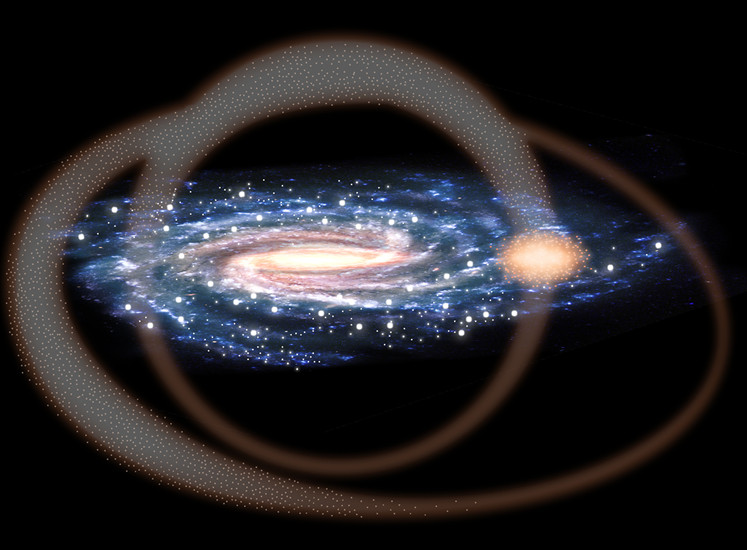Maser emissions are “cosmic lasers” from interstellar and circumstellar medium, produced by amplification of stimulated emission. Bright and compact maser sources are good targets for high-accuracy astrometry that are used for kinematic study of the Milky Way.
A research team from National Time Service Center (NTSC) of the Chinese Academy of Sciences conducted 22 GHz water maser survey towards the O-rich AGB stars towards the Sagittarius(Sgr) stellar stream. Using the Nobeyama 45m and Tidbinbilla DSS-43 70m telescopes, 21 maser emissions are founded, of which 20 were firstly detected.
The result was published on the newest volume of the Monthly Notices of the Royal Astronomical Society (MNRAS).
The Sagittarius Stellar Stream is the most prominent stellar stream around the Milky Way which produced by accretion and merges of our Galaxy with its satellite dwarf galaxy, the Sagittarius Dwarf Spheroidal Galaxy. “Investigation of this stream could help scientists to probe the galactic evolution and dark matter distribution”, said Prof. WU Yuanwei, leader of the research team.
Scientist studied the Galactic distributions of H2O and SiO maser-traced AGBs towards the Sgr orbital plane, and found an elongated structure towards the (l, b) ~ (340°, 40° ) direction. To verify the association between masters with Sagittariustidal stream, they further studied the 3D motions of these sources, results suggest these sources are still from the thick disk of the Galaxy, with a remarkable outward motion ~ 50 km s-1 away from the Galactic center.
"There must exist maser emissions in the Sgr stream. There could be two reasons that we still not confirmed masers within the Sgr stream. One reason could be limitation of sensitivity of our survey, while another reason could be sample bias, we will try other samples in our future studies." Said Prof. WU.

The Sgr Stream artist picture (Credit: ESA)

The water masers detected by this study.(Credit: NTSC)
Related links:
https://academic.oup.com/mnras/article-abstract/516/2/1881/6693541?redirectedFrom=fulltext
https://arxiv.org/abs/2207.05914
https://academic.oup.com/mnras/article/473/3/3325/4627936?searchresult=1
CONTACT:
XIONG Tiantian
National Time Service Centre, CAS
 Print
Print